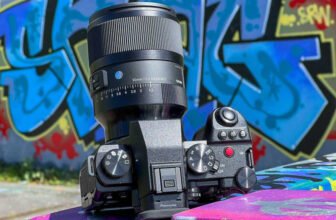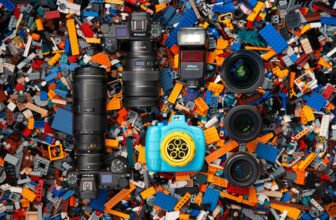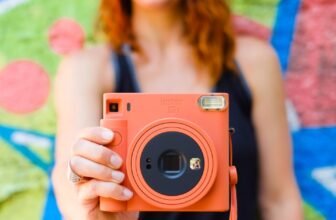
[adinserter block=”1″]
The Sony A9 III and Canon EOS R3 are both 24 megapixel full-frame mirrorless cameras that have a clear focus on providing as much speed as possible for sports and wildlife photography.
They share quite a lot of similarities when it comes to their core specifications and features, so which one should you pick?
We’re bringing you this Sony A9 III vs Canon EOS R3 head-to-head comparison to help you choose between these two full-frame cameras.
You can also read our detailed Sony A9 III review and Canon EOS R3 review to find out exactly what we think of each one in much more depth.
Sensor
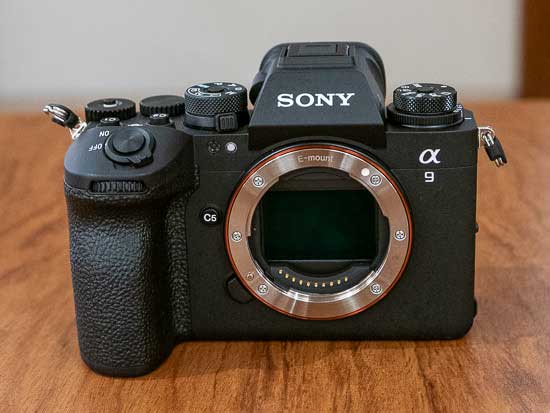
Both of these cameras offer very similar megapixel counts, but use very different sensor technologies.
The Sony A9 III has a 35mm full-frame stacked Exmor RS CMOS sensor offering a resolution of 24.6 megapixels.
The EOS R3 also uses a stacked BSI sensor, just like the one on the A9 III, with similar 24 megapixel resolution.
So both models have a stacked CMOS sensor with integral memory, which delivers faster performance and much faster burst speeds than cameras without.
Global Shutter
The key difference between them is a big one though – the A9 III uses the world’s first ever 35mm full-frame global shutter image sensor, whereas the Canon R3 has a more conventional progressive sensor design.
So whereas the R3 reads out the sensor line by line, a global shutter allows the A9 III to instantly read the entire sensor in one go.
This has a number of important benefits. It virtually eliminates rolling shutter in video, distortion of movement if the subject moves quickly across the frame, and flicker and banding under artificial lights, whilst providing an incredibly high shutter speed of 1/80,000th second.
The technological leap to a global electronic shutter means that the A9III completely dispenses with a traditional mechanical shutter. The R3 has both an electronic and a mechanical shutter.
Processor
The A9 III uses two of the very latest BIONZ XR processors, while the EOS R3 uses the latest Digic X processor.
ISO Speed
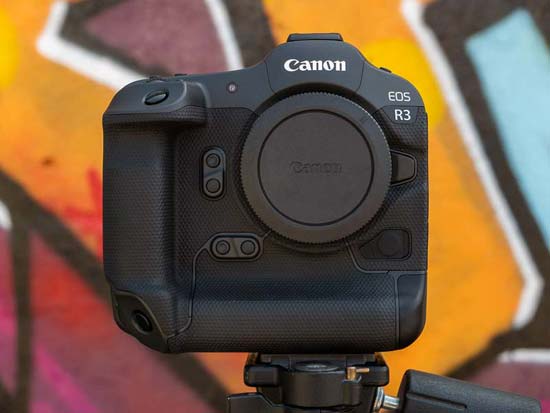
The ISO range of the Canon R3 is ISO 100 to ISO 102,400, which can also be expanded to ISO 50 to ISO 204,800.
The ISO range of the A9 III is 250-25600, expandable to 125-51200 for stills, as a characteristic of the global shutter sensor is a higher base ISO speed.
Video
The A9 III features 6K oversampling for 4K 60p and 4K 120p without cropping, all distortion-free (no jello effect) in 10-bit 4:2:2 S-log3 / S-Cinetone, with Dynamic Active Mode stabilisation, breathing compensation and custom LUTS all available.
The EOS R3 offers 6K/60p internal recording in addition to oversampled 4K video at up to 120p. It supports 10-bit 4:2:2 DCI 4K video at up to 60fps.
Autofocus
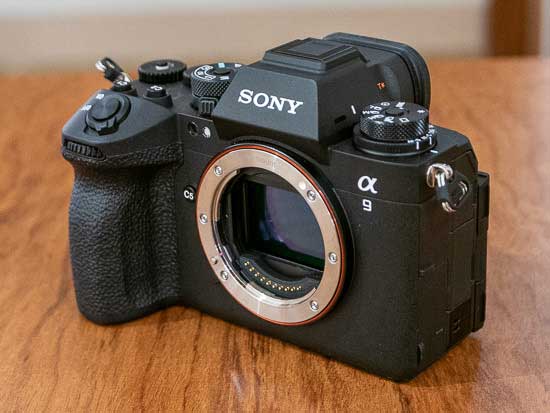
The Sony A9 III’s AF system has 759 on-sensor phase detection points that cover approximately 95% of the image area and it can focus down to -5EV.
It can recognise a human via its pose as well as its eye and face. So if the person’s head is turned away from the camera, it will still accurately detect the subject as human based on its AI deep learning.
It can also recognise animals, birds, insects, airplanes, and cars/trains. In the latter category, it is capable of focusing on helmets, can recognise the eyes of some grazing and small animals, and more easily pinpoint the eyes of a variety of bird types as well as recognising bird bodies.
The Canon R3 has the most advanced version of Dual Pixel CMOS AF that the company has ever produced with 4779 AF points, along with a vehicle tracking mode, which allows you to expertly track motorbikes, open cockpit Formula cars as well as GT and rally cars, and even has the ability to prioritise the vehicle or the driver’s helmet!
In an attempt to get one up on Sony, the Canon R3 also allows you to select and move the AF point just with the look of your eye using the electronic viewfinder. This gives the R3 a real edge when it comes to quickly being able to focus, without even having to touch the camera controls.
Burst Shooting
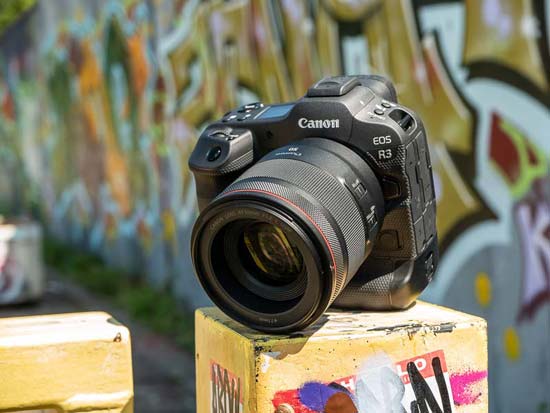
The Canon R3 provides 30fps shooting with the electronic shutter with full AF/AE tracking and minimal image distortion for 540 JPEG or 150 RAW images.
The newer A9 III can record an astonishing 120 frames per second for 192 frames / 1.6 seconds at full 24 megapixel resolution for both JPEG and 14-bit Raw formats with full-time AF/AE and no blackout between frames.
Pre-capture is a new feature on the A9 III that we’ve seen before on other manufacturers’ cameras, but is a first for Sony. When activated, up to 120 frames per second are temporarily stored while the shutter button is half-pressed, and up to 1 second before can be captured once the shutter is fully pressed, providing a degree of leniency for fast-moving action.
Shutter Speed
The R3 has a very fast maximum shutter speed of 1/64,000th second thanks to its electronic shutter, but the A9III ups the ante further by offering an even more impressive 1/80,000th shutter speed for stills.
Note that for the moment the maximum shutter speed is 1/16,000th second when the A9 III is set to any burst shooting mode, even the Low setting. This will apparently be changed to 1/80,000th sec in March 2024 via a firmware update.
Flash Sync Speed
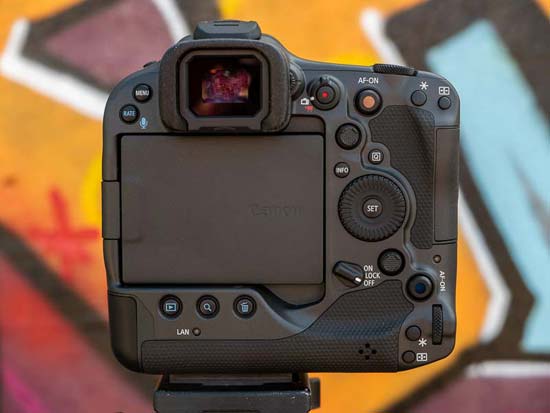
Flash-sync is available at any shutter speed up to 1/80,000th sec on the A9 III thanks to its global shutter, completely eliminating the need for a high-speed flash sync setting,
This potentially allows the photographer to overpower the sun and control the background exposure even at midday at base ISO with a high shutter speed, and just use a small, affordable flashgun as a fill-in light.
In comparison the R3 has a flash sync speed of 1/250 sec, which is much more typical.
Body
The Sony A9 II largely follows the tried and tested design of seemingly almost every previous Sony Alpha camera – if it ain’t broke, don’t fix it seems to be the mantra for the newest Alpha camera.
The Canon R3 takes a markedly different approach, featuring a similar integrated grip with duplicated vertical controls that EOS-1D series DSLR cameras have always offered.
This means that the R3 is much bigger and heavier than the A1 out of the box, although fitting a vertical battery grip to the Sony camera substantially narrows the size and weight differences between them.
Both cameras are fully weather-sealed, as you’d expect from such professional level models.
Viewfinder

The A9 III has a better viewfinder than the R3 – a class-leading 9.44M-dot OLED Quad-XGA electronic viewfinder with 0.90x magnification and a refresh rate of up to 240fps.
The Canon R3 has a lower-resolution 5.76M-dot OLED electronic viewfinder with 0.76x magnification and a 120fps refresh rate.
LCD Screen
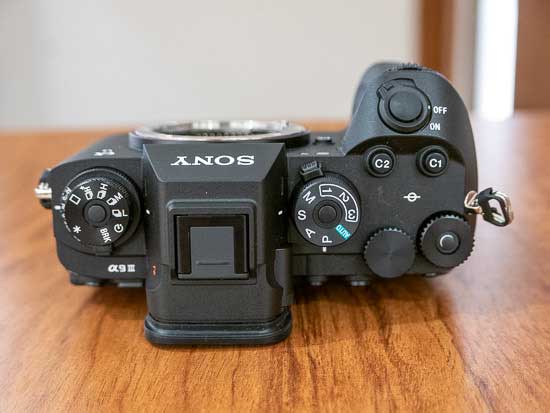
The A9 III inherits the 3.2-inch, 2095K dot resolution, 4-axis LCD screen from the A7R V and which is unique to Sony, which can be flipped out to the side, rotated to the front, folded against the back of the camera to help protect it, and set to many other positions in-between.
The A9 II has a higher-resolution 4.1-million dot 3.2-inch vari-angle touch screen which provides greater flexibility of shooting angles thanks to its ability to tilt and rotate into a range of positions.
IBIS
Both cameras have 5-axis optical in-body image stabilisation that corrects for pitch and yaw shake.
The Canon EOS R3 has a 5-axis In-Body Image Stabilizer that can combine with the Optical Image Stabilizer in selected RF lenses to offer industry-leading performance worth up to 8-stops
Thanks to a newly redesigned stabilisation unit, the A9 III offers up to 8 stops of in-body stabilisation, making it the most capable Alpha camera in this regard.
The A9 III also benefits from having two electronic stabilization modes for video recording. There’s a special Active Mode that increases stabilization for hand-held movie shooting by using the BIONZ XR processors.
Providing even more compensation at the expense of an increased crop factor is the new Dynamic Active Mode, which improves the stabilisation by more than 30% over the Active Mode.
Memory Cards
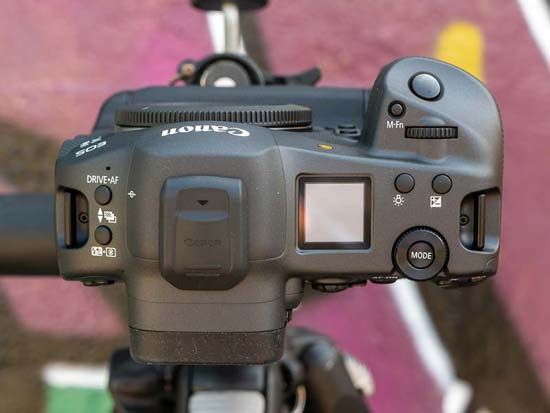
The Canon R3 features dual card slots, one SD UHS-II slot and one ultra-high speed CFexpress Type B slot.
The A9 III also has dual slots, but both of them can be used for either SD UHS-II compliant memory cards or faster CFexpress Type A cards.
Battery Life
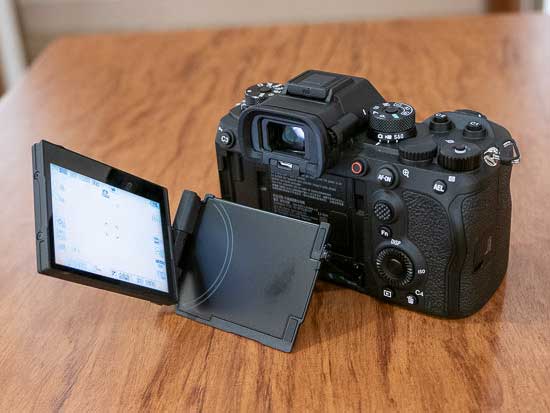
The Sony A9 III uses exactly the same large capacity NP-FZ100 battery as the A9 II model. It is capable of recording 530 shots using the LCD screen and 400 when using the EVF.
The EOS R3 uses the LP-E19 series battery which provides up to 620 shots when using the viewfinder and 860 shots when using the LCD monitor, significantly longer than the A9III.
Both cameras can also be powered and charged via a USB connection, which is useful if you’re out and about and have a compatible powerbank to plug the camera into, and both use the newer USB-C variant.
Price
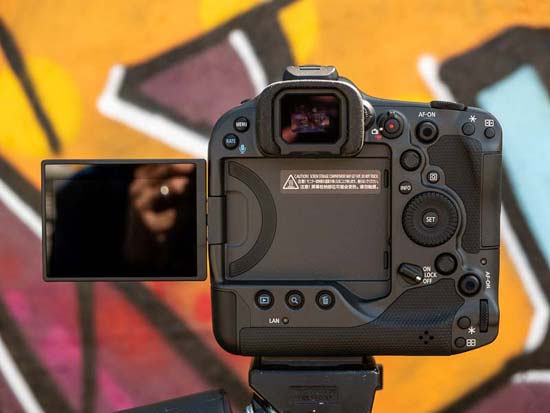
The Sony A9 III is priced at £6100 / $6000 / €7000 body-only in the UK, US and Europe respectively.
The Canon EOS R3 was priced at £5,879.99 / $5,999.00 in the UK / US when it launched in late-2021.
Conclusion
Choosing between the new Sony A9 III and the Canon EOS R3 really comes down whether or not you’ll benefit from the former’s global shutter technology and which one you prefer in terms of size and handling, as otherwise they’re very evenly matched.
So what do you think? Would you choose the more conventional Canon EOS R3 or the innovative A9 III? Leave a comment below!
Your Comments
[adinserter block=”1″]
Credit : Source Post



